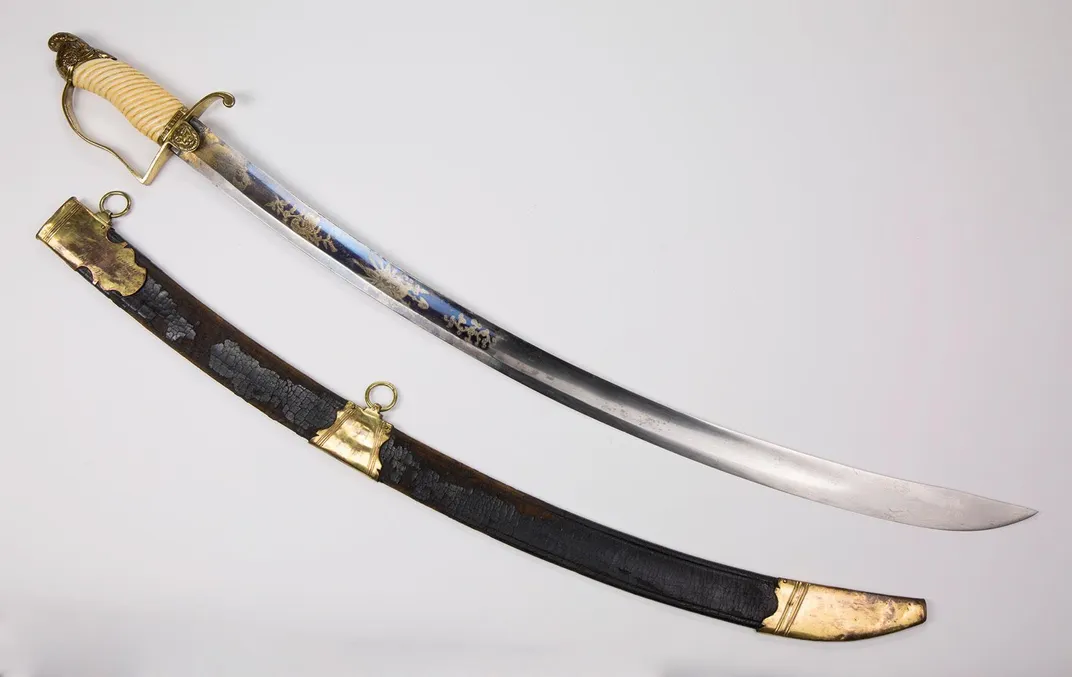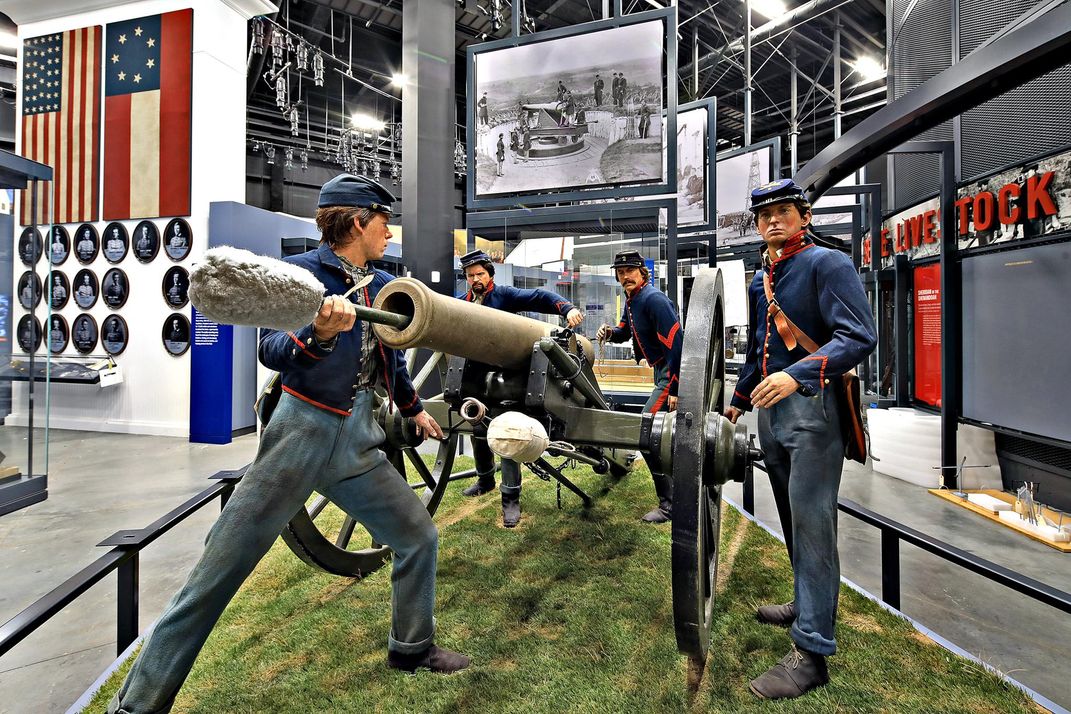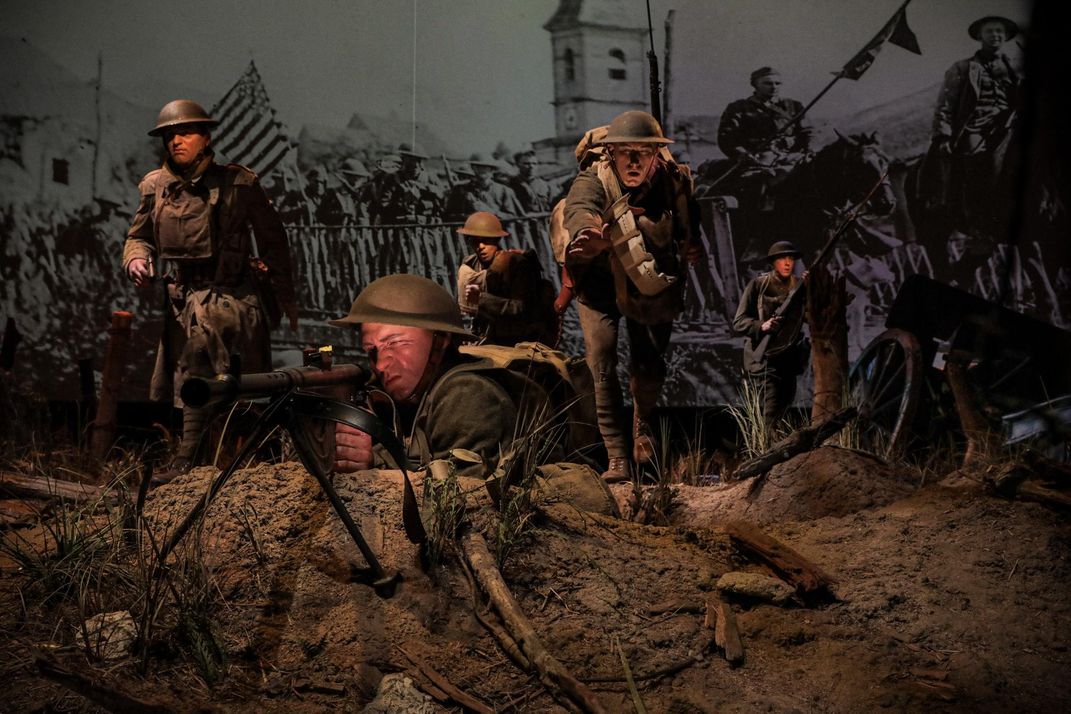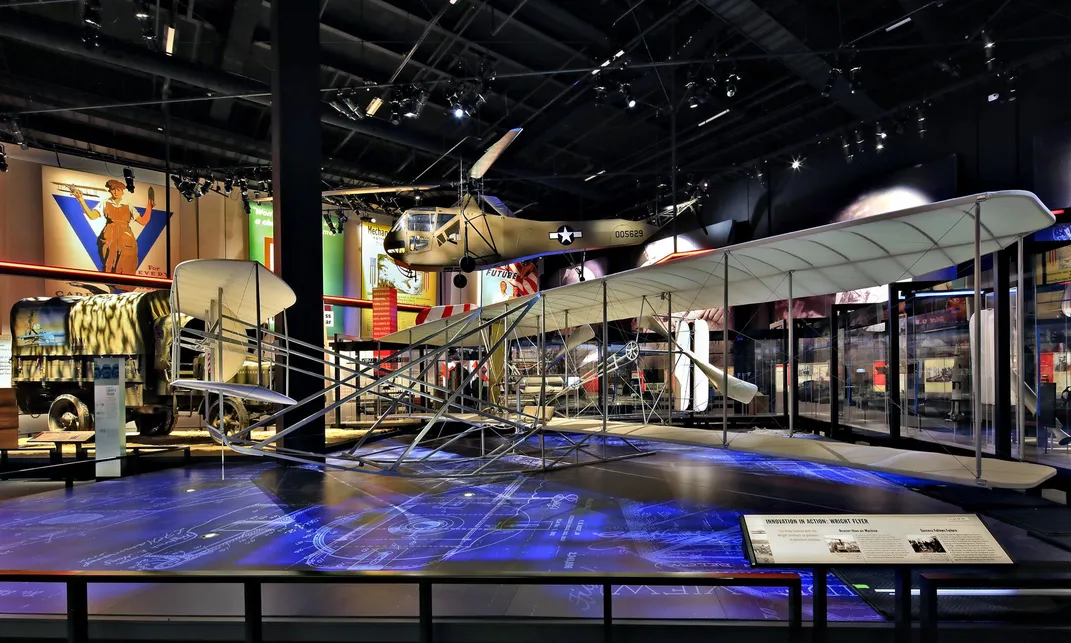A New Museum Delves Into the Complex History of the U.S. Army
The Fort Belvoir institution is the first museum dedicated to interpreting the story of the nation’s oldest military branch
:focal(1043x633:1044x634)/https://tf-cmsv2-smithsonianmag-media.s3.amazonaws.com/filer/d7/42/d742ac9d-1cff-4cb0-b399-726a21d338ce/50463443707_c3aa1562bd_k.jpg)
The first museum dedicated to interpreting the complex history of the United States Army opened to the public this Veteran’s Day, reports Matthew Barakat for the Associated Press.
Located on a grassy plain in Fort Belvoir, Virginia, the privately funded National Museum of the United States Army honors the service of the more than 30 million men and women who have served in the Army since its founding in 1775. A joint effort between the U.S. Army and the Army Historical Foundation, the museum has been in the works for over a decade.
The Covid-19 pandemic delayed the museum’s grand opening but allowed it to plan a rescheduled opening that coincided with Veteran’s Day. Attendance is limited, but visitors can reserve free tickets ahead of their visit online.
Highlights of the new collections include a life-size depiction of American troops storming the beaches of Normandy on D-Day and a number of artifacts from the front lines of key moments in U.S. military history: a sword from the defense of Fort McHenry in the War of 1812, a wristwatch that stopped at the moment a plane crashed into the Pentagon during the 9/11 attacks, and the American M4 Sherman tank that first breached enemy lines during the Battle of the Bulge in World War II, per the AP.
Another key attraction, a gallery titled “Army & Society,” charts the symbiotic relationship between national culture and the armed forces, as well as the technological and medical advancements that the Army has facilitated over the years.
In a statement, Secretary of the Army Ryan D. McCarthy notes that the museum hopes to emphasize the individual stories that make up Army history. He adds, “The National Army Museum will be a place for members of the total Army family to gather and share their stories, while also creating an opportunity for visitors to connect with our nation’s history through the eyes and voices of individual soldiers.”
To help fulfill this goal, metal pylons etched with portraits and biographies of soldiers are stationed throughout galleries and entryways, writes Philip Kennicott in a review for the Washington Post. Some displays, such as one depicting trench warfare during World War I, include wax-cast sculptures of soldiers. These faces are actual replicas of current Army soldiers, “down to every facial feature,” notes Victoria Chamberlin for DCist.
In addition to centering individual narratives, the museum explores the Army’s fraught legacy as an instrument of power, war and oppression. As the Post notes, Army history often goes hand in hand with the story of American imperial exploitation. In the country’s founding decades, the Army waged the protracted “Indian Wars” to forcibly remove Native Americans from their rightful tribal lands; during the Wounded Knee Massacre of 1890, the U.S. Army 7th Cavalry Regiment indiscriminately murdered hundreds of Sioux men, women and children.
In 1968, American forces in Vietnam murdered as many as 500 unarmed villagers in the Mỹ Lai massacre. And, during the Iraq War, U.S. Army and CIA officers engaged in horrific physical and sexual abuse, as well as torture, of tens of thousands of prisoners in Abu Ghraib, a U.S. military prison.
“We didn’t want to make a hallway of heroes,” Paul Morando, chief of exhibits at the museum, tells the AP.
“We don’t shy away from the more sensitive subjects the Army’s been involved in,” Morando adds. “We mention Mỹ Lai. We mention Abu Ghraib. We mention Wounded Knee. These events are put out in a factual way for the public to interpret or learn more about, but we do not ignore those subjects.”
Writing for the Post, however, Kennicott notes while these atrocities are broached in the exhibitions, they are often described in “language that is both maddeningly dispassionate and morally obtuse.”
Throughout the museum, displays detail the Army’s history of exclusion within its ranks. Black troops have participated in the Army since its inception, but the forces weren’t fully integrated until 1948, and black soldiers were long excluded from high-level positions. Exhibitions also tell of the 442nd Regimental Combat Team, a segregated unit comprised of more than 12,000 second-generation Japanese Americans who fought in World War II. At the time, the United States government was forcing Japanese Americans across the country—including some of the soldiers’ family members—into internment camps.
Women, meanwhile, were only allowed to take command positions in non-combat roles in the 1970s. And both women and men continue to report rising rates of sexual assault in U.S. military service, as Caitlin Kenney reported for Stars and Stripes this year.
Architecture firm Skidmore, Owings & Merrill designed the museum’s $200-million new home—a sleek, five-story, 185,000-square-foot building that boasts large expanses of glass and polished steel, according to the Post. Its highest level features a glass ceiling that lights up at night to represent “the light of freedom of democracy,” Susan Smullen, the museum’s public affairs officer, tells DCist.
Smullen adds, “Stainless steel represents the strength of the Army and the resiliency of the Army, but also the reflective nature of the Army as a representation of American society.”
/https://tf-cmsv2-smithsonianmag-media.s3.amazonaws.com/accounts/headshot/nora.png)






/https://tf-cmsv2-smithsonianmag-media.s3.amazonaws.com/accounts/headshot/nora.png)